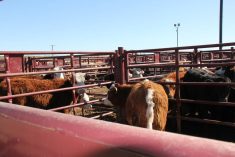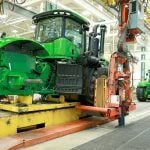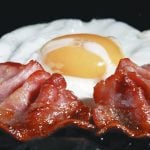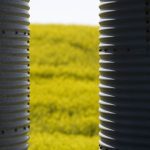Grant Lastiwka eats, sleeps and dreams forages. As one of Canada’s most enthusiastic forage extension specialists, Lastiwka is the go-to man for information on year-round grazing management.
Past winner of the Alberta Forage Industry Network (AFIN) Leadership Award and former livestock and forage business specialist with Alberta Agriculture and Forestry, Lastiwka has had an illustrious career promoting the use of forages in Canada. Over the years, he has been a driving force for the Canadian Forage and Grasslands Association as well as Alberta’s AFIN. Lastiwka and his wife Della live on their farm just east of Innisfail in central Alberta where they have been bale grazing their beef herd for 26 years. Over the years, Lastiwka has learned a thing or two about this low-cost wintering method as part of his year-round grazing system.
Read Also
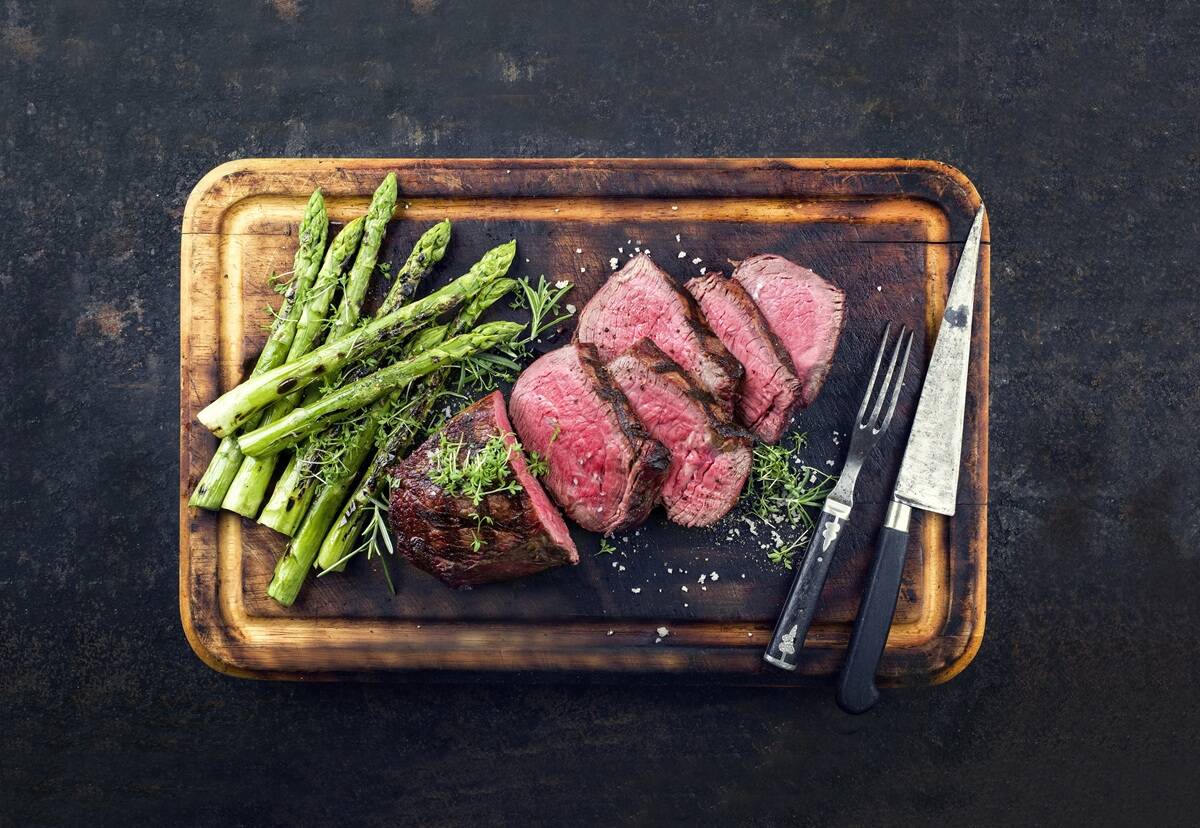
Building demand together: The impact of Canada’s beef import levy
The beef import levy has become a central tool for ensuring balance in Canada’s beef industry
“It all starts with acquiring the feed bales in the late fall,” says Lastiwka. “I try and purchase my feed bales for a lower-cost ration. They vary in type from second-cut alfalfa to straw.”
For trucking cost-effectiveness, Lastiwka wants heavy bales. He tries to find medium-quality greenfeed, hay and straw bales from neighbours. He has a trucker move them to his yard and place them in his bale-grazing field in the early fall. He places the bales about seven paces centre-to-centre in long rows so that the cows spread their manure and wasted feed evenly over the pasture area.
Lastiwka has found that the cows won’t graze the previously bale-grazed field in the summer evenly. They targeted areas between bale residue and grazed those plants severely before grazing residue areas. It was very difficult to manage the forage stand for healthy plants. Plant vigour was greatly hurt for some plants and in residue areas, plants were maturing, resulting in patches of ungrazed grass. As a result, Lastiwka has set up bale-grazing fields in small areas of less than an acre to concentrate the cows on the winter grazing paddock. He puts up and takes down perimeter electric for ease of winter feeding.
Lastiwka also finds that it’s important to have bales placed on the round so that the fall rain doesn’t penetrate the bales. This helps prevent feed wastage.
“I keep the bales on the round if I think the bales may not be used that winter or if I don’t plan to use bale feeders on them. This is particularly true with my straw that I like to leave for bale grazing a year down the road. Otherwise, I like them on end for ease of netwrap or twine removal,” he says.

Twine removal can be the most challenging task in a bale-grazing operation. If bales are set on the round, to be used that winter, Lastiwka tries to remove all the twine. However, with first-year straw, the winds sluff the bales greatly and that’s why he likes two-year-old straw.
For bales left on end, he cuts the bottom half of the twines and removes them. He cuts the bottom 18 inches of netwrap and pulls it loose, preventing it from freezing to the ground or becoming covered in snow. Just before feeding these bales in winter, he cuts the netwrap farther up, leaving the top 18 inches intact. He pulls the loose netwrap on top of the bale, then manually places the light feeder over the bale before finally cutting and removing all the twine or netwrap.
With the size of the big bales today, this is crucial, Lastiwka says. If the bales are on the round and netwrap not yet removed, he cuts as low to the ground as he can on both sides, pulling the netwrap off. Unfortunately, some netwrap is left under the bale.
“This is miserable to get later but I try whenever it becomes visible to pull it out of the residue. Often this is in early spring. I hate netwrap and cattle often like to chew it — especially calves — if it is left.”
Lastiwka likes to leave the twine on big square bales as it helps ration the feed. The twine doesn’t tear out ear tags. Sisal twine is left on bales and helps to ration feed and again won’t tear out ear tags.
In both cases, the twine can be easily picked up soon after feeding and again checked in spring after the ice thaws. Some producers will try to leave netwrap on the lower part of the bale when set on end to maintain compactness longer and pick it up later.
Feed testing a good representative sample of your bales is a must, Lastiwka says. He also monitors the body condition score on all his herd and he divides the cows into groups.
First and second calvers, along with thin cows, go into one feeding group and the better-conditioned older cows in another group. This allows him to manage their ration needs and clean up more closely.
“This is the biggest tip for managing feed waste and keeping cows in suitable body condition,” says Lastiwka.
Lastiwka uses an electric fence with a very good fencer with at least 10 joules of power and eight ground rods. He uses poly wire in front of the cows or aircraft cable mixed with 12.5-gauge wire, ensuring power is carried well. It is important to keep rebar posts out of bale-grazing areas, he says. He only uses rebar posts on the fencelines of the bale-grazing perimeter and even there he mixes in fibreglass sucker rod.
Lastiwka uses 3/8-inch fibreglass posts (48 to 60 inches long) to stick in the bales as a barrier to new feed. He’s been doing this since the first or second year he started bale grazing and says these fibreglass posts are “your best investment,” especially when dealing with deer traffic. To prevent low voltage in the fence, he doesn’t use rebar in front if at all possible.
“I have never found a need for a hot and ground wire. I believe people do it because they haven’t got their fence done right. It is two feet down to a sandstone layer so I need a very large grounding system,” says Lastiwka.
Lastiwka uses light one-inch square tubing bale feeders and some plastic tubing bale feeders to limit feed wastage. They can be flipped off and rolled to the next set of bales. It’s important to have enough “bunk” space to permit fair access to the feed. Three-plus days are required to consume the feed and reduce waste.

“I have higher-quality feed in one paddock and straw and lower-quality feed in another,” he says. He shifts back and forth between the two to balance the ration weekly. The number of days on each feed type is regulated and based on weather, body condition, feed quality and stage of pregnancy.
Lastiwka looks at balancing the ration for the cows over a few days in ratio to feedstuffs called for in a daily low-cost ration. For example, in the first six days the cows have access to higher-quality greenfeed or hay in one paddock followed by four days of lower-quality feed and straw in a different paddock. When feed is borderline quality and it is really cold, he will either speed the rotation of the cows even though they waste more feed or just keep them on the better feed.
Lastiwka feeds minerals as recommended in Alberta Agriculture’s Cowbyte$ ration calculator. Two local mineral companies in Innisfail know how to make product to Cowbyte$ recommendations. Keeping the mineral fresh and proper placement encourages consumption, he adds. Using grain within this mix is key when feed is poor and high calcium and magnesium are needed.
“Having hay or greenfeed or varied quality feed keeps animals searching as they eat,” says Lastiwka. He’s a big fan of creating flexibility in the program so that he can “stickhandle” through winter, adjusting to meet animals’ needs and mitigate weather issues.
“Waste can get to be a lot on the poorest feed, especially when looking at the overall cost of wintering the herd. If you start a tractor and can bring in different feeds periodically, then more options are present. I find that in really cold weather, waste is least and in warm melting weather, the wastage is worse. I also find with deep snow, animals clean up before moving on so less control may be needed.”
Lastiwka’s cows calve on pasture in late May in different calving areas each year. It is harder to move cow-calf pairs but grazing management is key so cows and calves have to be moved often. After calving, the cow-calf pairs graze throughout the summer on various paddocks around the farm.
What is done to each paddock at any given time during the spring-summer-fall-winter grazing period should be varied whenever possible. Lastiwka learned this from Dr. Llewellyn Manske of North Dakota at an Alberta Rangelands Conference in 2000. Whenever you graze a plant, you affect it. Lastiwka says he can’t thank Manske, nor grazing instructor Jim Bauer, enough for this concept, as it changed how he carries out grazing.
Manske and Bauer’s concept of plant phenology allows Lastiwka to determine plant grazing readiness, timing and degree of utilization and how much residue to leave. It makes pastures more resilient and promotes the desired species, he says. Light grazing and fast moves with back fencing are most important in the early parts of the grazing season for tiller growth, he adds.
Lastiwka starts on a different paddock each year so at least timing is varied. He monitors each paddock so if one species starts to dominate, he can manipulate it back. Sometimes he has to do earlier spring grazing, before the grass three-leaf stage, to reduce grass competition against legumes. Legume-grass pastures need this as meadow brome’s early spring growth gives it an upper hand when nitrogen is plentiful in a new stand that was bale grazed for several years previously.
Back fencing, especially in periods of rapid growth, is key to preventing the regrazing of forage plants too soon after the previous grazing session. Lastiwka moves cows daily in spring and plans overall for a 1.5 or twice-over grazing during the growing and dormant seasons. Lastiwka feels this works for him and improves the soil carbon capture. Soil fertility and speed of plant growth determine grazing use, especially for the recently bale-grazed ground, which has plants high in vigour. The variability based on grazing readiness and plant population percentages have to be monitored and managed. He always waits for the new regrowth of plants to get to the three-leaf stage or greater before starting to graze a paddock.
Lastiwka’s traditional alfalfa has been decreasing. Over the years, he has introduced various legumes including Kura clover, birdsfoot trefoil, Yellowhead, Anik, traditional alfalfa, cicer milkvetch and red and alsike clover. He has broadcast the forage seed and tramped it in by livestock, seeded into sod and stubble with a zero-till drill, fed it to cattle in mineral and grain, left legume areas for seed set before grazing, all with varying degrees of success.
The amount of legume spread of these non-traditional pasture legumes is slowly increasing. Several years ago, Lastiwka made arrangements with a local beekeeper to establish hives on his farm, hoping that it would help with seed pollination and further establishment of his legumes. This and the fact he planted shelterbelts of varied types of trees and shrubs and has naturally treed areas, lowlands, and a diverse landscape of perennials, helps connect the natural corridor with pollinators and wildlife for ecological benefits in the area.
The lack of rain this past summer has challenged Lastiwka’s grazing operation. He is a big believer in having his future feed supply in place long before it is needed. In April, he purchased 275 second-cut alfalfa bales left over from the previous year and wrapped in plastic. Because of the impending drought, his cows remained on bale grazing until May 21, when they started to graze the perennial pastures that had reached the three-leaf stage. In the area that had been bale grazed this past winter, there was sufficient grass growth to graze during the very hot weather of mid-July.
Over the years, Lastiwka has bale grazed most of his farm. On his poorest land he has noticed that the soil organic matter has increased. The soil organic matter and the additional litter left from bale grazing helps keep soil moisture in the forage stand. This is extremely important during drought periods.
Besides looking after his cow herd, Lastiwka still keeps busy promoting forages through his current association with Union Forage.




